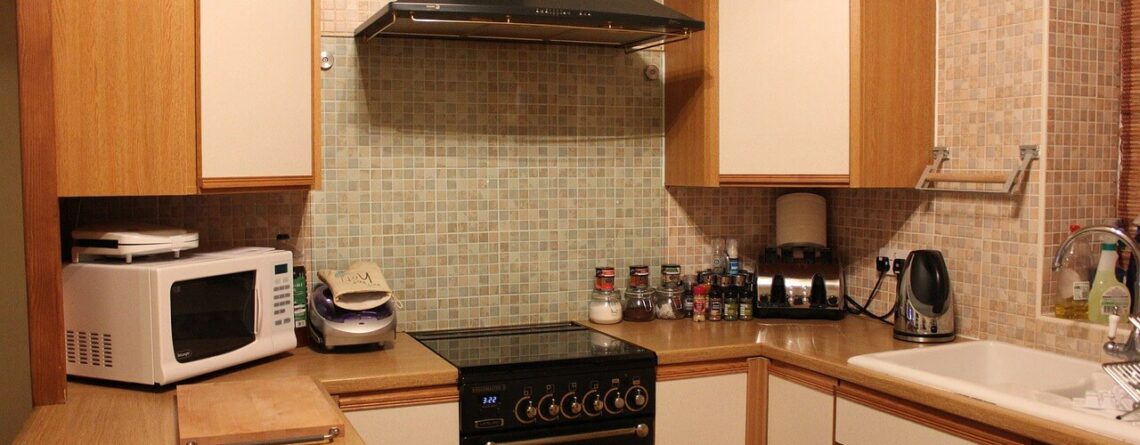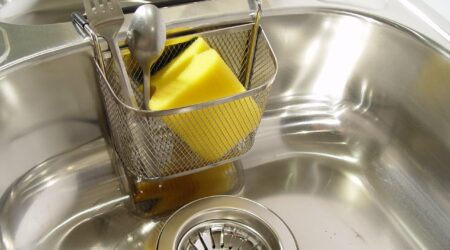How To Clean Kitchen Cabinets From Grease
Most of your kitchen cleaning time was probably spent on the sink, counters, and floors.
However, your cabinets, particularly the doors, necessitate regular maintenance as well.
Cooking grease, food splatters, steam, and even fingerprints can accumulate on kitchen cabinets.
These elements are components of caked-up dust, which can result in a dingy and dull cabinet surface.
Leaving caked-up dust for an extended period of time may result in difficult cleaning.
In this article, we will show you how to clean kitchen cabinets from grease and other accumulated dust.
How Do I Clean Sticky Kitchen Cabinets?
There are various types of grease, each of which necessitates a unique cleaning solution.
However, before you begin cleaning your kitchen cabinets, make sure you have all of the necessary supplies.
If you dislike commercial cleaning products, you can substitute cleaning solutions with common household items.
Among the best kitchen grease cleaners, we can use vinegar and baking soda.
Here’s how to create your cleaning solution to remove dust and grimes off the kitchen cabinets.
Light grease cleaning solution
Collect your supplies, which should include a spray bottle and undiluted distilled vinegar (white).
Fill the spray bottle halfway with vinegar and half with warm water for delicate finish cabinets.
Vinegar is particularly effective at removing the sticky film left by hands.
So, if you have kids who usually get their hands greased, you can clean them with vinegar effectively.
Test the Cleaning Solution
Spray a small amount of vinegar cleaning solution on the surface of your cabinet.
Allow the solution to sit for 5 to 10 minutes to see the results.
After a certain amount of time has passed, wipe down the cabinet with a cloth.
Then, check for discoloration.
If there is no discoloration, continue cleaning with the vinegar solution.
But, if the cabinet appears discolored, your solution might be too strong.
Discard the first solution and make a new solution with more water and less vinegar.
Repeat the procedure until you have the exact formula.
Here’s how to clean kitchen cabinets from grease.
Mist the greasy cabinets
Apply a light layer of vinegar solution to all cabinet surfaces.
After applying, allow the solution to sit for 5 to 10 minutes.
Make sure not to oversaturate the solution in your cabinets.
This can result in wood deterioration, peeling paint, or rusting metal.
Respray the cabinets
After the vinegar has sat for a few minutes, re-mist the cabinets in the same manner.
Then, scrub away any remaining grease and grime with a clean, soft dishcloth.
Scrub the stubborn kitchen cabinet areas
Extremely dirty cabinets may require light buffing with a non-abrasive scrubbing pad.
Scrub lightly in a circular motion over areas with stuck-on grease.
Keep in mind that abrasive cleaning tools can harm the finish or surface of your cabinets.
So, before using the scrubbers, test them at the cabinet’s non-visible side.
Dry the cabinets
Wipe your cabinets dry with a fresh clean, soft, lint-free cloth.
During this period of cleaning, you should be able to see or feel any remaining greasiness.
So, if there’s a presence of grease, simply repeat this process as needed until your cabinets are grease-free.
Grease Cleaning Solution with a Liquid Detergent
Add a small amount of grease-cutting dish soap to the bucket half full of warm water. If, on the other hand, you plan to use laundry detergent, follow these steps:
- For every 2 cups or 470 ml of water, add a cup or 230 ml of detergent.
- Then, stir the solution to ensure that the soap is evenly distributed in the water.
Keep in mind that some detergents and soaps are concentrated.
This means that in these cases, you may need to reduce the amount used.
For best results, check the label and follow the instructions.
Apply the cleaning detergent solution
To begin, soak a soft, lint-free dishcloth in the detergent solution for a few minutes.
Then, wring out any excess solution in the bucket.
Using a wet cloth, wipe the solution across all surfaces of your cabinets.
If the grease is severe, leave the solution for about five minutes.
Furthermore, use caution when applying cleaner to the surface of your cabinets.
If you use too many solutions, the finish on your cabinets may be damaged.
Wipe the cabinets with a clean cloth
Wring out any excess moisture from your dishcloth.
Then, wipe the cabinets down with the cloth to remove any grease or other grime buildup.
Also, when the cloth gets dirty, rinse it by immersing it in water and wringing it out again.
For stubborn grease, it may require scrubbing to remove the accumulated grease.
Wipe any remaining moisture on the surface of the cabinets
Wipe away any remaining detergent solution or water with a clean, lint-free cloth.
After that, check your cabinets for any remaining grease or grime.
To remove any lingering grease, simply repeat the cleaning process described above.
Baking Soda for Heavy Kitchen Cabinet Grease
Combine two parts baking soda and one part vegetable oil in a small mixing bowl.
Mix the baking soda and oil together using clean fingers.
Or, you can use a kitchen utensil until it forms a thick, well-blended paste.
Make sure to have coated all of your cabinets’ greasy surfaces.
Here’s the baking soda cleaning formula you will need:
- For every 2 tbsp (30 ml) of oil, put 4 tbsp (50 ml) of baking soda.
- Mineral oil could also be substituted for vegetable oil. Use the mineral oil formulation in the same way that you would use vegetable oil.
Next, test this paste in a hidden corner of your cabinets.
Baking soda’s mild abrasive properties may damage some finishes.
Therefore, use this cleaning formula with caution.
Simply repeat the cleaning process described above.
Find more useful guides and how to’s on MaidFeed.com, your everyday cleaning guide.




